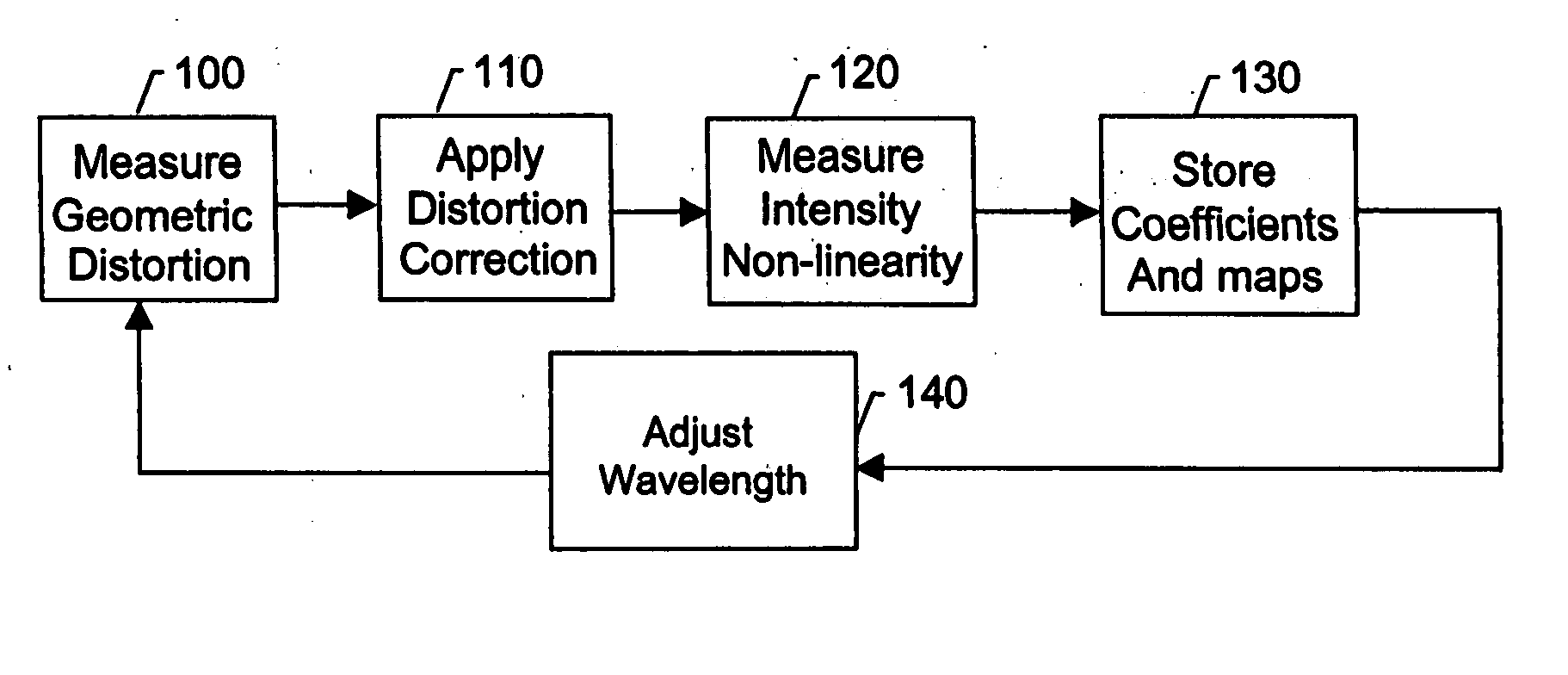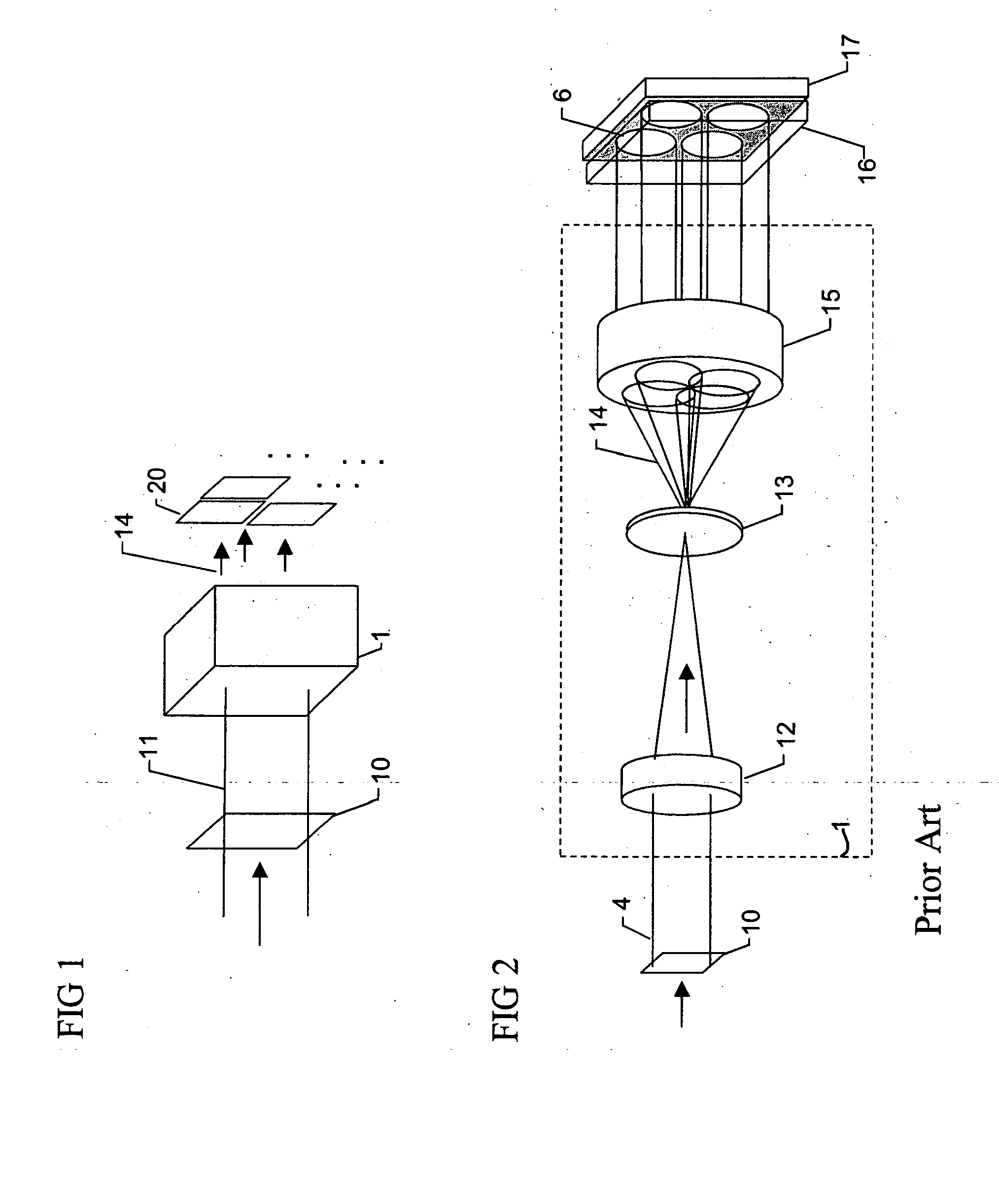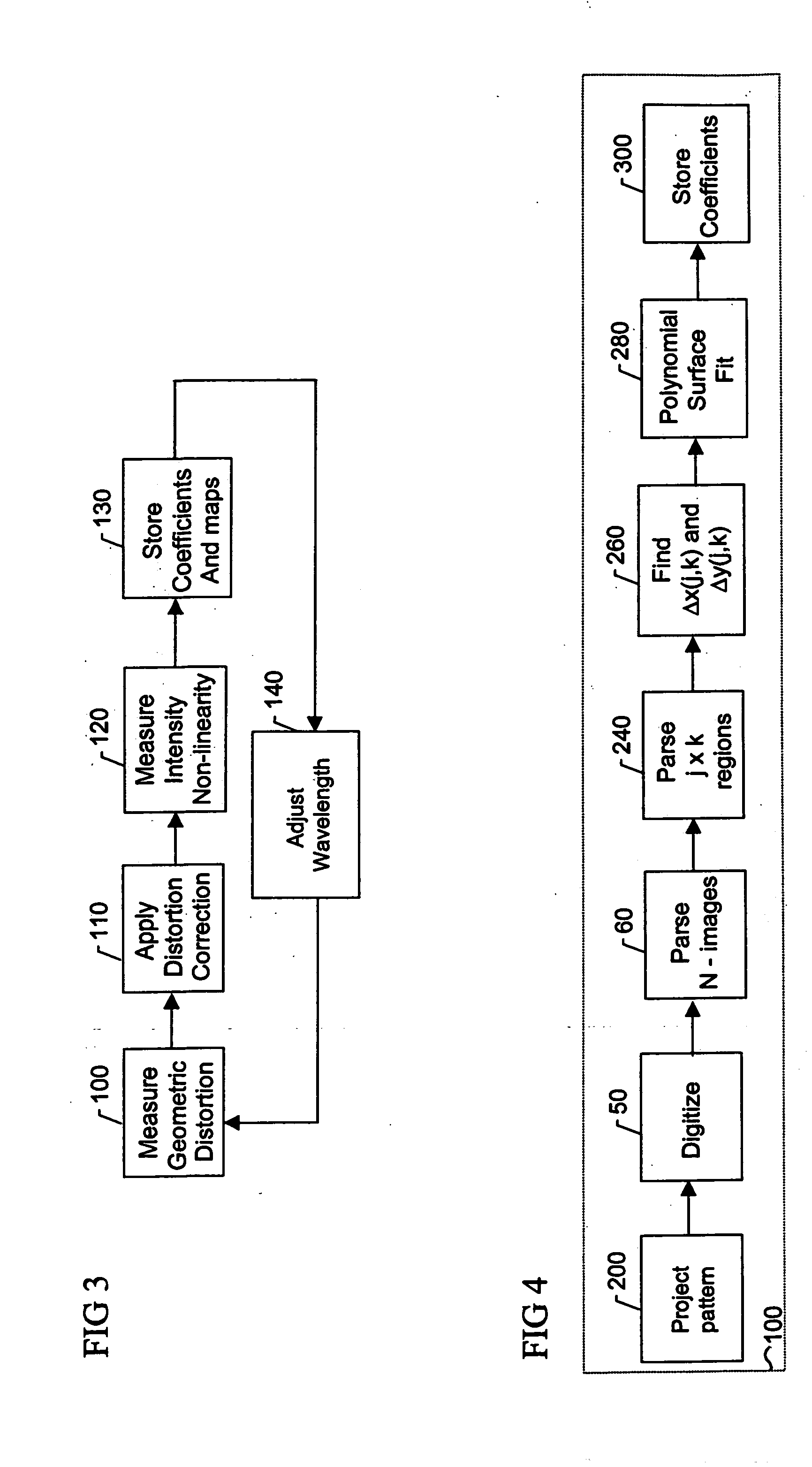Calibration and error correction in multi-channel imaging
- Summary
- Abstract
- Description
- Claims
- Application Information
AI Technical Summary
Benefits of technology
Problems solved by technology
Method used
Image
Examples
Embodiment Construction
[0029] The present invention provides apparatus and methodology for quantifying and correcting for errors in multi-channel imaging systems. There are three primary types of errors that are addressed in this invention: 1) geometric errors, such as image distortion and registration; 2) deterministic errors, such as channel or pixel dependent attenuation; and 3) stochastic or multivariate errors, such as thermal noise or sensor smear. For the purposes of this disclosure, the term “geometric distortion” is used to refer to those errors that produce distortion and misalignments in the images produced by the multi-channel system. The term “intensity distortion” is used to refer to nonuniformity of intensity detection resulting from attenuation along the optical path, and detector nonlinearity or nonuniformity of response.
[0030] Turning to the drawings, a generic multi-channel imaging system is shown in FIG. 1. The system consists of an image splitting element 1 that produces a plurality ...
PUM
 Login to View More
Login to View More Abstract
Description
Claims
Application Information
 Login to View More
Login to View More - R&D
- Intellectual Property
- Life Sciences
- Materials
- Tech Scout
- Unparalleled Data Quality
- Higher Quality Content
- 60% Fewer Hallucinations
Browse by: Latest US Patents, China's latest patents, Technical Efficacy Thesaurus, Application Domain, Technology Topic, Popular Technical Reports.
© 2025 PatSnap. All rights reserved.Legal|Privacy policy|Modern Slavery Act Transparency Statement|Sitemap|About US| Contact US: help@patsnap.com



